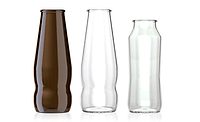Go Figure
5
Number of years German brewers went without sales
increases, ending last year with a 0.2 percent increase, according to an
Associated Press report. Brewers fared better abroad — exports of
German beers were up 13.1 percent, while sales within Germany were down 1.5
percent. Germany has the third-highest per capita consumption of beer.
10.9
Billions of dollars in organic foods and beverages
sold last year — 18 percent more than in 2003, according to the
Natural Marketing Institute, Harleysville, Pa. However, household
penetration for organics was down. Only 30 percent of U.S. consumers report
buying organic products vs. 40 percent in 2003.
28
Percent increase in U.S. wine exports in 2004,
according to the U.S. Department of Commerce. U.S vintners exported $794
million worth of wine, 95 percent of which came from California. Most of
the wine was shipped to Europe.
50
Percent fewer cases of liver cancer among daily
coffee drinkers vs. those who never drink coffee, as determined by a study
of more than 90,000 Japanese and reported by CNN. Reasons for the
difference in cancer rates were not determined, but occurrences were lower
among those who drink one to two cups per day and even lower at three to
four cups per day.
162
Billions of dollars contributed to the U.S. economy
each year by beer-related businesses, including
brewers, wholesalers, retailers and brewery suppliers, according to a joint
study by the Beer Institute and the National Beer Wholesalers Association.
The industry supplies 18 million jobs and more than $30 billion in federal,
state and local taxes.
900
Millions of dollars expected from Chilean wine exports
this year, according to Chilevid, a Chilean wine association. As a group,
Chilean wineries will invest $3.2 million in a 20-country promotional
campaign.
7,023,651
Barrels of craft beer sold in 2004, according to the
Beer Institute, Boulder, Colo. That represents a 7 percent increase over
2003, and compares to a 0.5 percent increase among mass-market beers, and
1.4 percent for imports.
